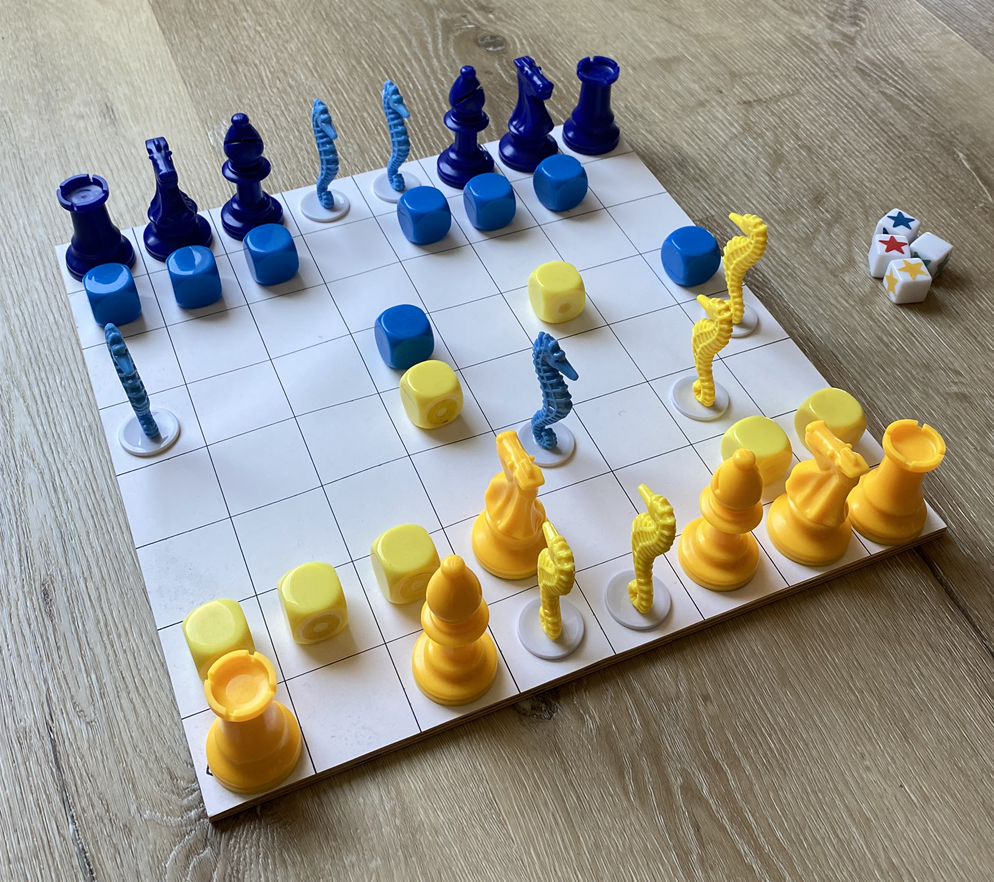

This implementation, physical version, is an improvement from the ratty prototype but not quite a perfected version. It does look good, and the game with its cheat sheet instructions are more understandable than the ratty prototype.
When this was completed I thought the proportions were not quite right. The ideal is short wide cubes, in between classic chess pieces, and thinner, slightly taller seahorses. I thought the cubes should be bigger and chess piecs
a little smaller. But
playing the game made me immediately forget these considerations. I figured the different shades of blue were acceptable because the pieces have completely different functions, but now I want uniform colours.
The rings and dots on the back sides of cubes are from binder reinforcer packages, coloured by felts. This is an improvisation. Dots and circles would be cut into the plastic, 3D printing.
The paper wasn't glued perfectly on the board, so you see a minimal ridge. Don't worry about the colours on the dice.
The dice would be tetrahedrons ("pyramids") just like the Royal Game of Ur. Adds to the exotic Atlantis theme.
Here are pictures of a game played.
Both sides opened things up so that the seahorses in the back can start zapping cubes. Blue seahorse went forward three spaces. Yellow knight moved to threaten it. Then the blue cube went right both to avoid the knight and to kill off a yellow cube.
It's not typical for pieces to dive in so deeply, but there is more of that coming.
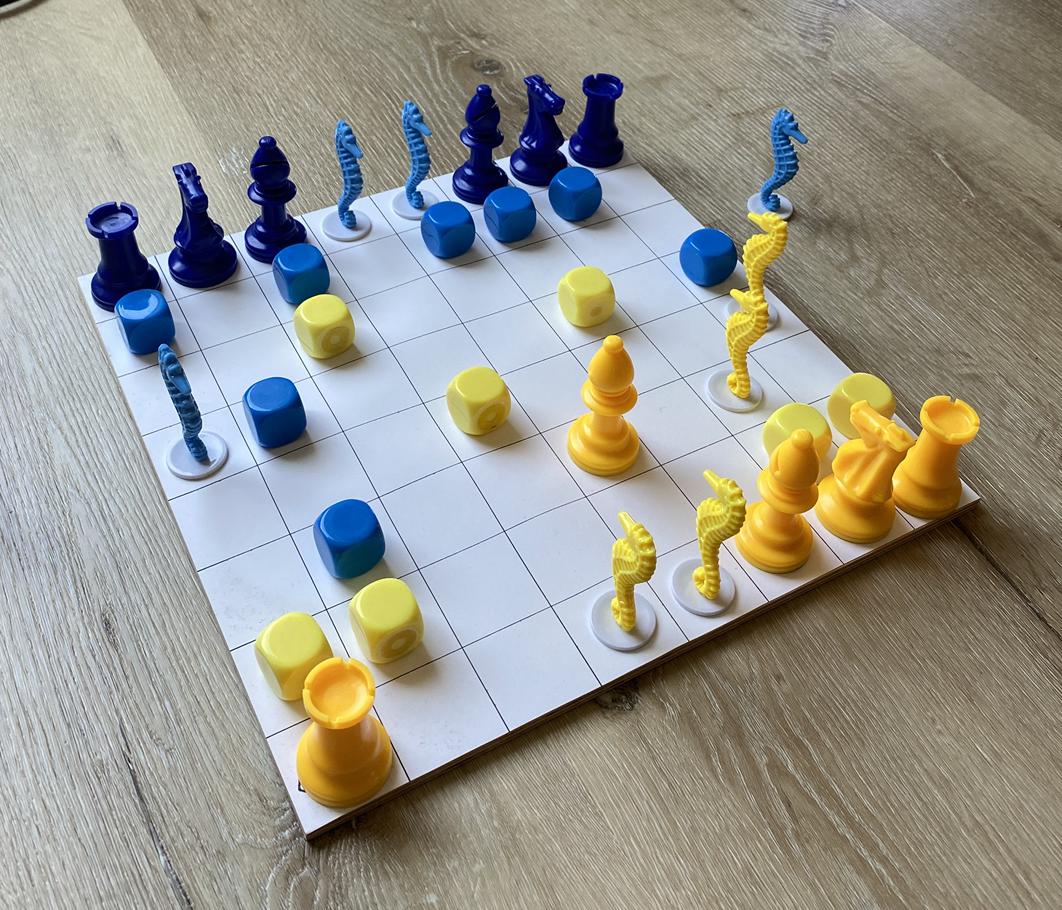
The early pictures here show some moves, but skip some. I'll see if I can figure out/remember what moves were made. Later there will be a picture for every turn.
Yellow knight moved left up, threatening a blue seahorse. This made the knight vulnerable to a cube, but it opens a path for the bishop to hit
the intrusive blue seahorse.
Blue cube goes far forward and zaps the yellow knight.
But knight had moved for a reason. Yellow bishop takes the intrusive blue seahorse.
Fourth blue cube goes left. This opens up a path for a blue seahorse, so the yellow cube faces not a cube but a
seahorse. Maybe some other lesser reasons too.
Yellow cube goes far forward.
Atlantis Chess usually develops a rough diagonal for the front line. But, as we will see, this is not a typical game.
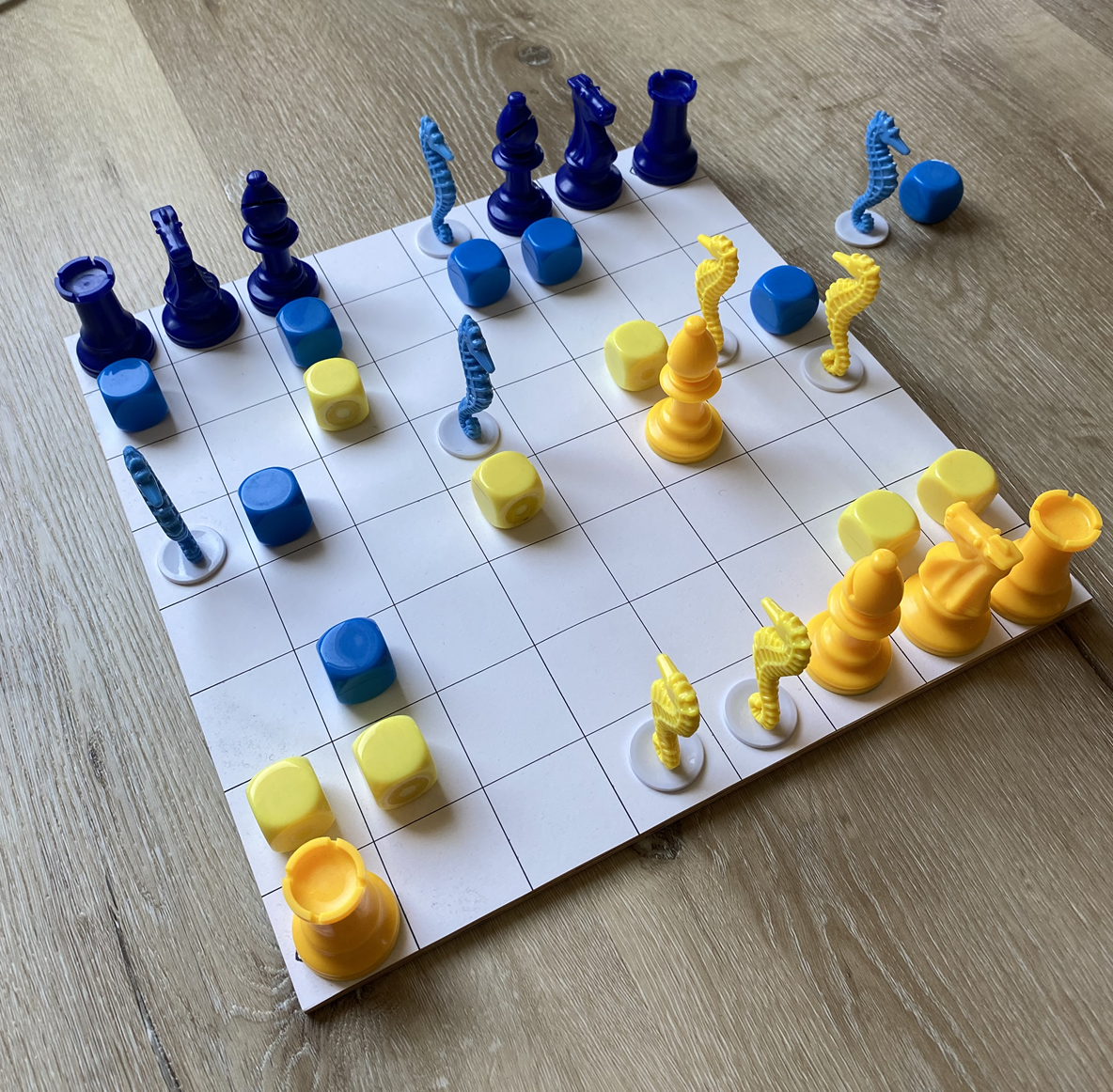
Blue seahorse moves from the back. At this point blue seahorse could roll 1, 2 or 3 and kill off a cube.
Right yellow bishop moves out of the way to save its skin and make room for a seahorse.
I'm not 100% sure of what happened at the top right, but the seventh blue cube is gone, and a yellow seahorse moved forward.
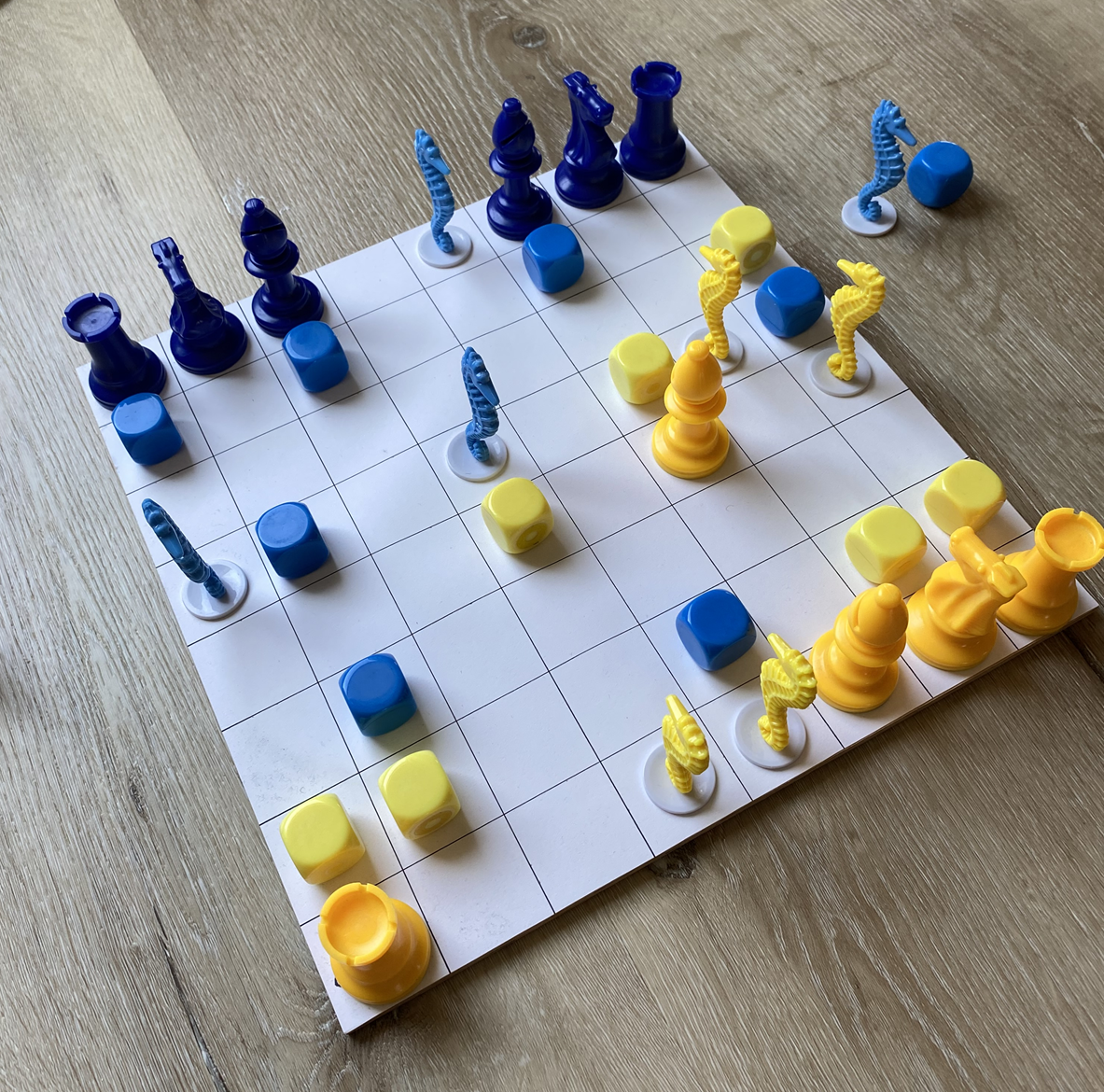
The middle blue cube has gone far forward. This has A) opened up space for a seahorse B) opened up a space for the bishop to harass seahorses and, above all, C) prevented lateral moves (left <-> right) for yellow cubes.
Yellow cube has moved from the upper left to the far right. That is the fox in the hen house.
Blue could obviously make trouble on the left hand side, eat its way to the yellow vision square. But
Yellow is right about to take blue vision square. What should blue do? You can take the yellow cube with
a blue cube, but that's 50/50 without knowing the yellow cube's datum.

Blue moves the right rook down. Now if the yellow cube attacks, you will know its datum and can attack from two angles. Great move. It's possible yellow will be intimidated and run away.
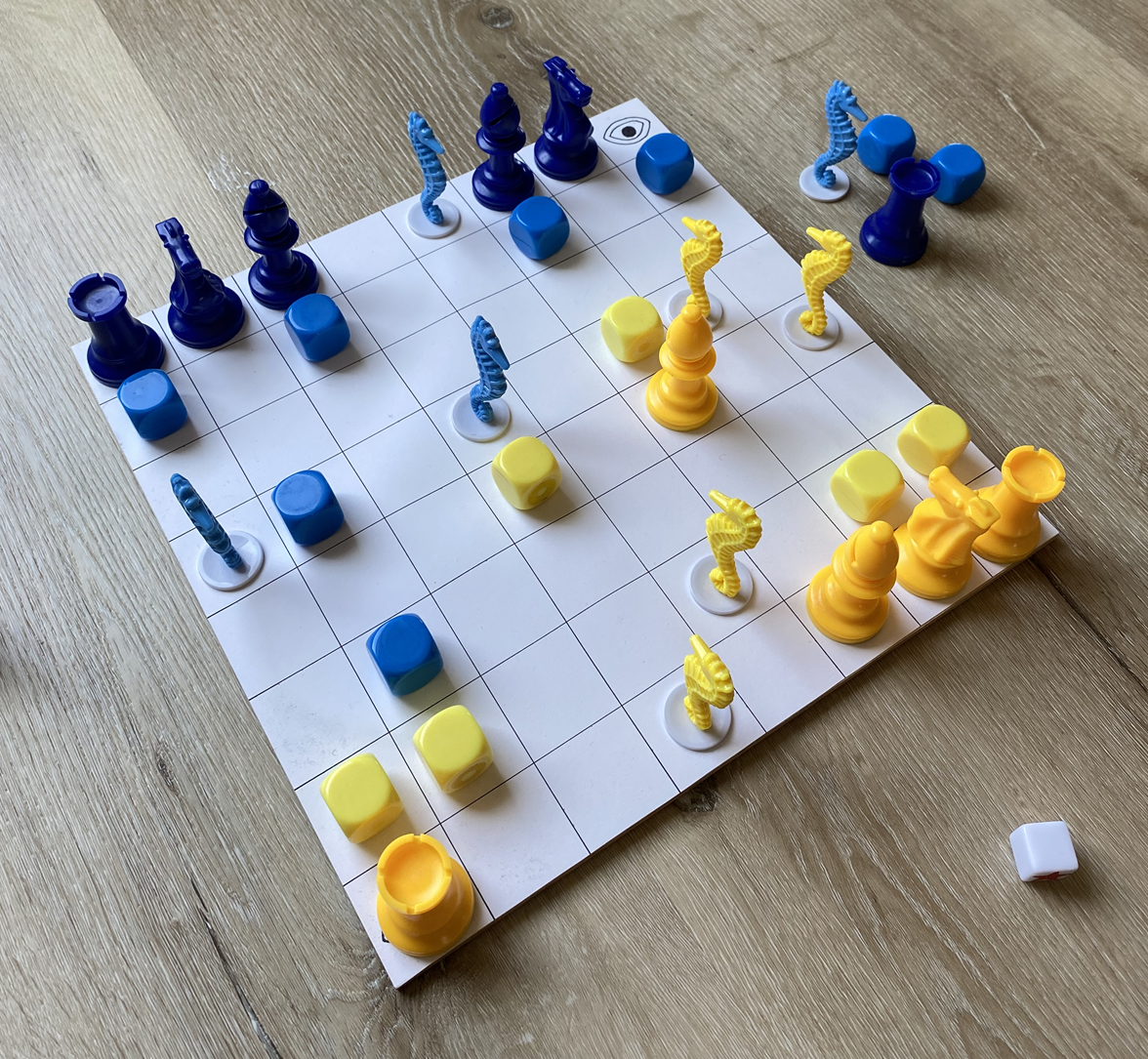
Yellow cube nails rook at the top right. Far right blue takes that cube. We now know that right blue cube has a ring. Will you remember that?
Yellow seahorse can take a cube with a roll of 1 or 3, 25% + 25%. Seahorse rolls 1 and takes a cube at the bottom.
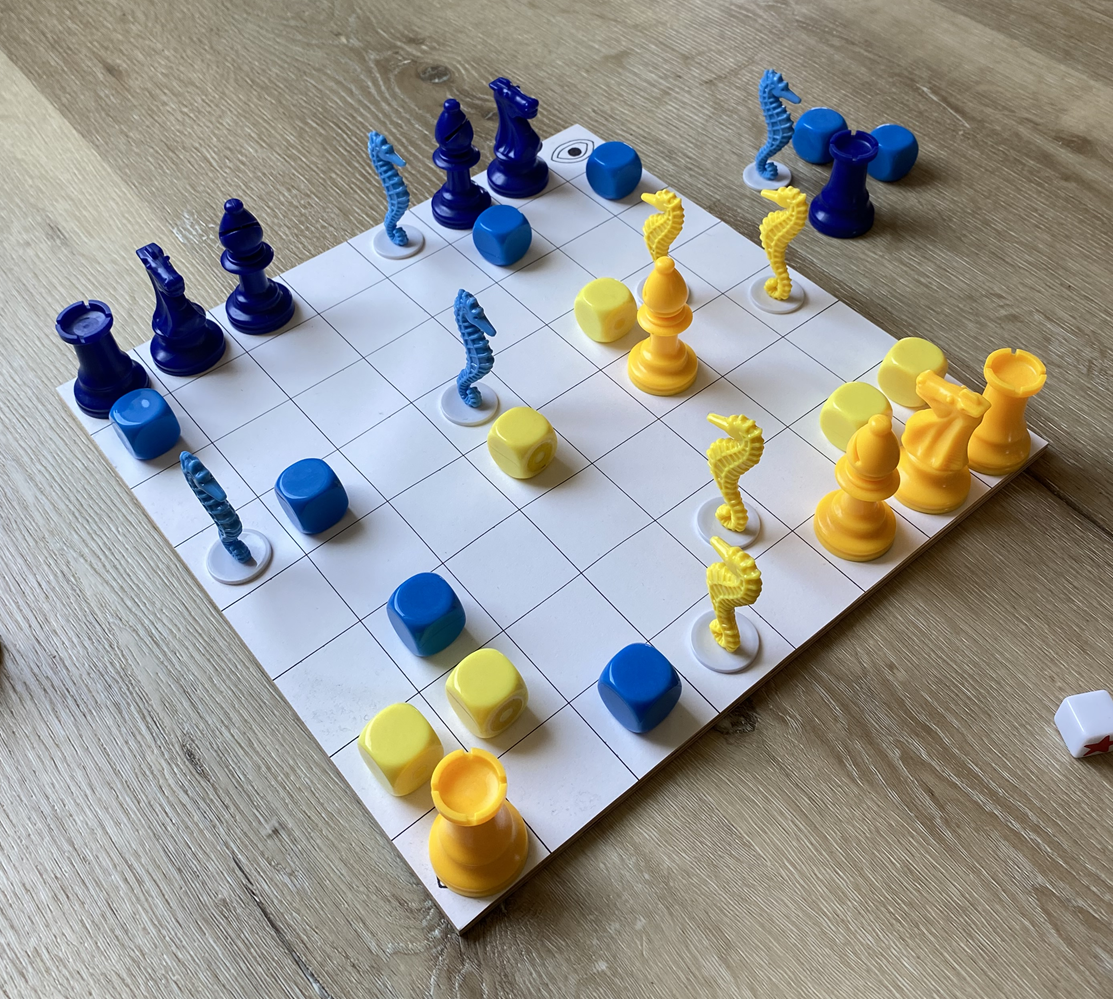
Now the blue fox is in the hen house. The blue cube in front of a bishop went all the way to the opponent's back line.
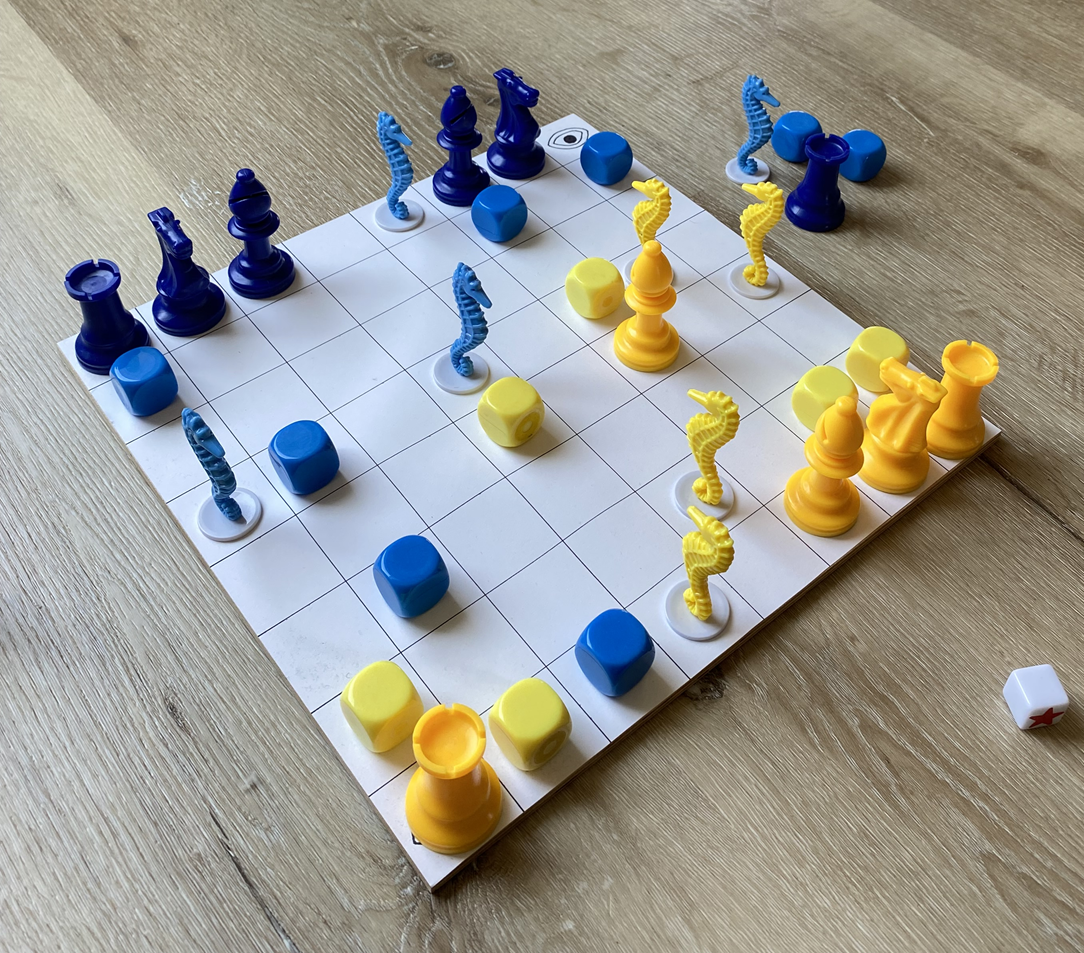
Yellow cube dropped back one space to protect the corner. That wan't the only option.
There is a photograph missing for a blue turn. I don't know what happened, but I suspect there was a roll
for seahorses that went bad. Blue might have rolled three, which can take a cube, but got cold feet.
You don't want to take risks around your water square.
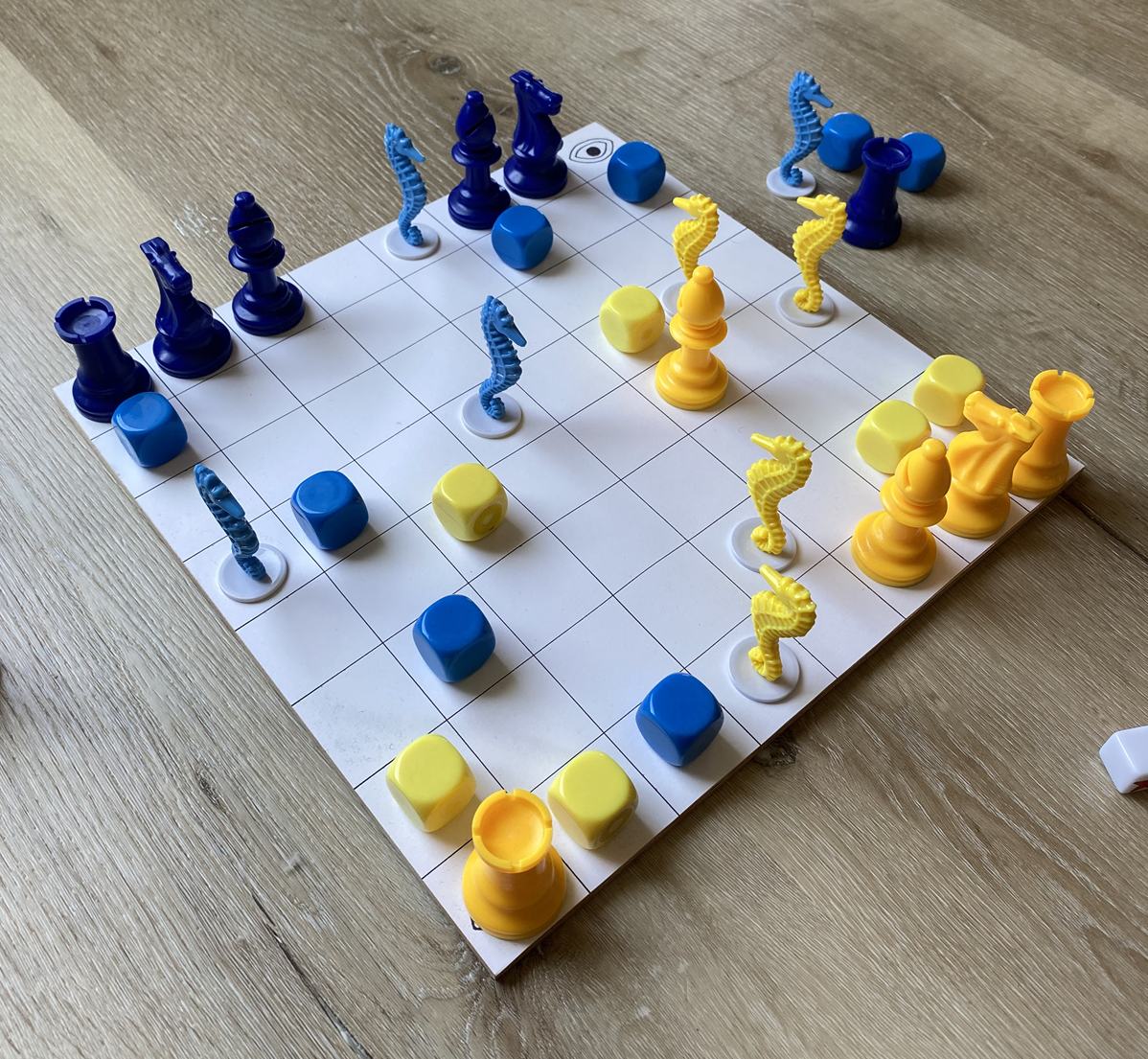
The third yellow cube shuffled one space left. This
A) moved the yellow cube to fight the battle for the bottom left corner
B) moved the cube out of the firing line of the seahorse and,
C) threatens to eat into the opponent's vital water square, eating multiple classic chess pieces.
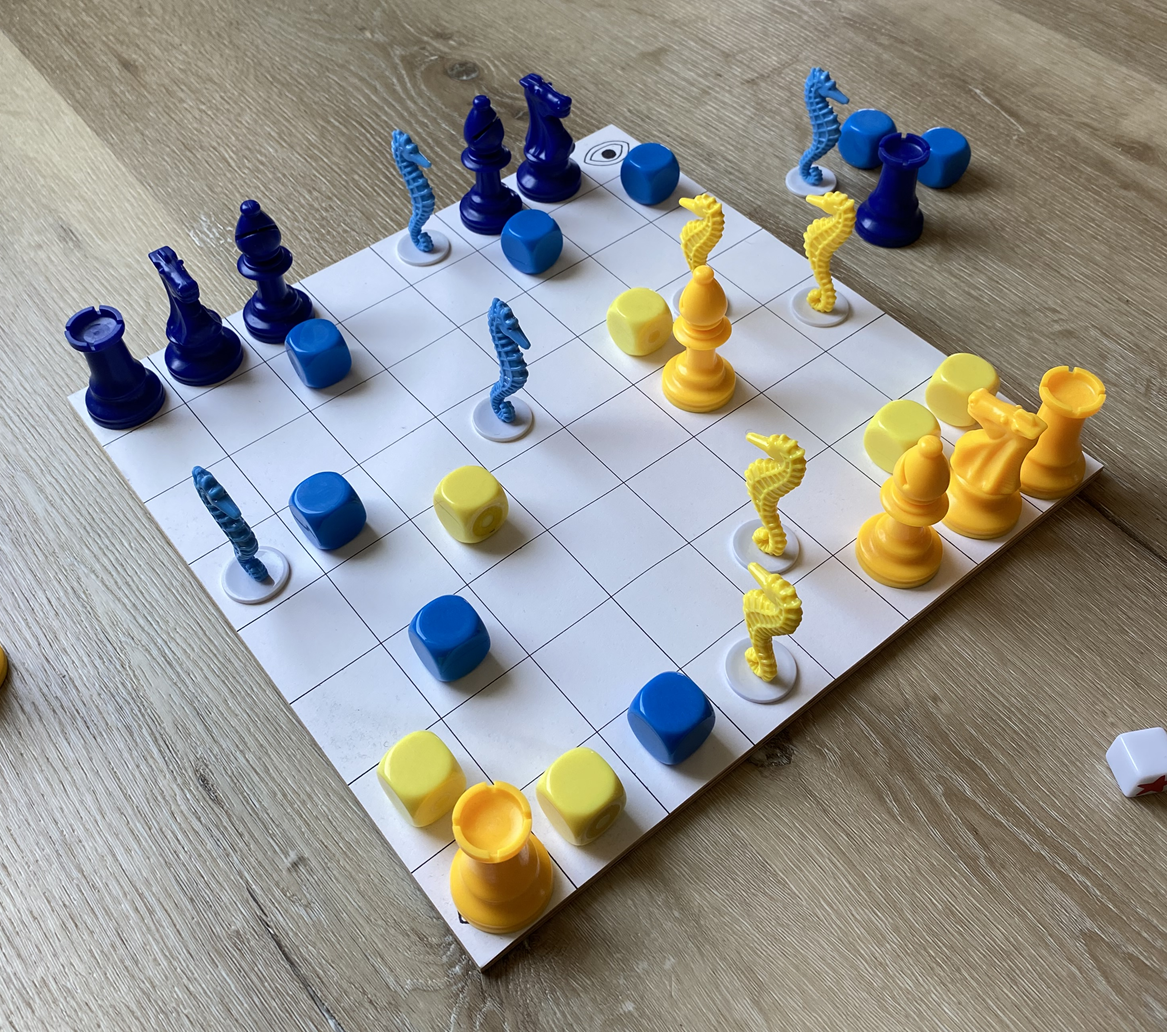
Upper left blue cube shuffles a couple of spaces right, to protect the corner. Security of the water
square takes priority over everything.
So what moves could be made, by either side? It's tense already.
We won't go over cube knife fights on the left.
Blue rook could drop down two spaces and start to eye seahorse targets.
Left blue bishop could threaten the opponent's water square. This won't work right away, but it's a serious long-term threat.
Moving the right blue knight could protect a cube, protect a corner. But this is not a great move.
Right blue bishop has three options, where the best is to go two spaces down from the vision square.
Rolling the dice for yellow seahorse would lead to
Back yellow bishop could quietly encourage a cube to move forward so that the opponent's water square can be threatened. Mmm .. easy to counter, but it would keep a blue cube in place. Yellow cube would now be in a position to jump into the left side fight.
Farther yellow bishop can move to threaten blue's vision square. That's pointless because it can be countered easily. Well, you haven't exactly lost a turn, you're protecting a yellow cube, and you're in a potentially threatening position.
Rolling the dice for blue seahorse would lead to
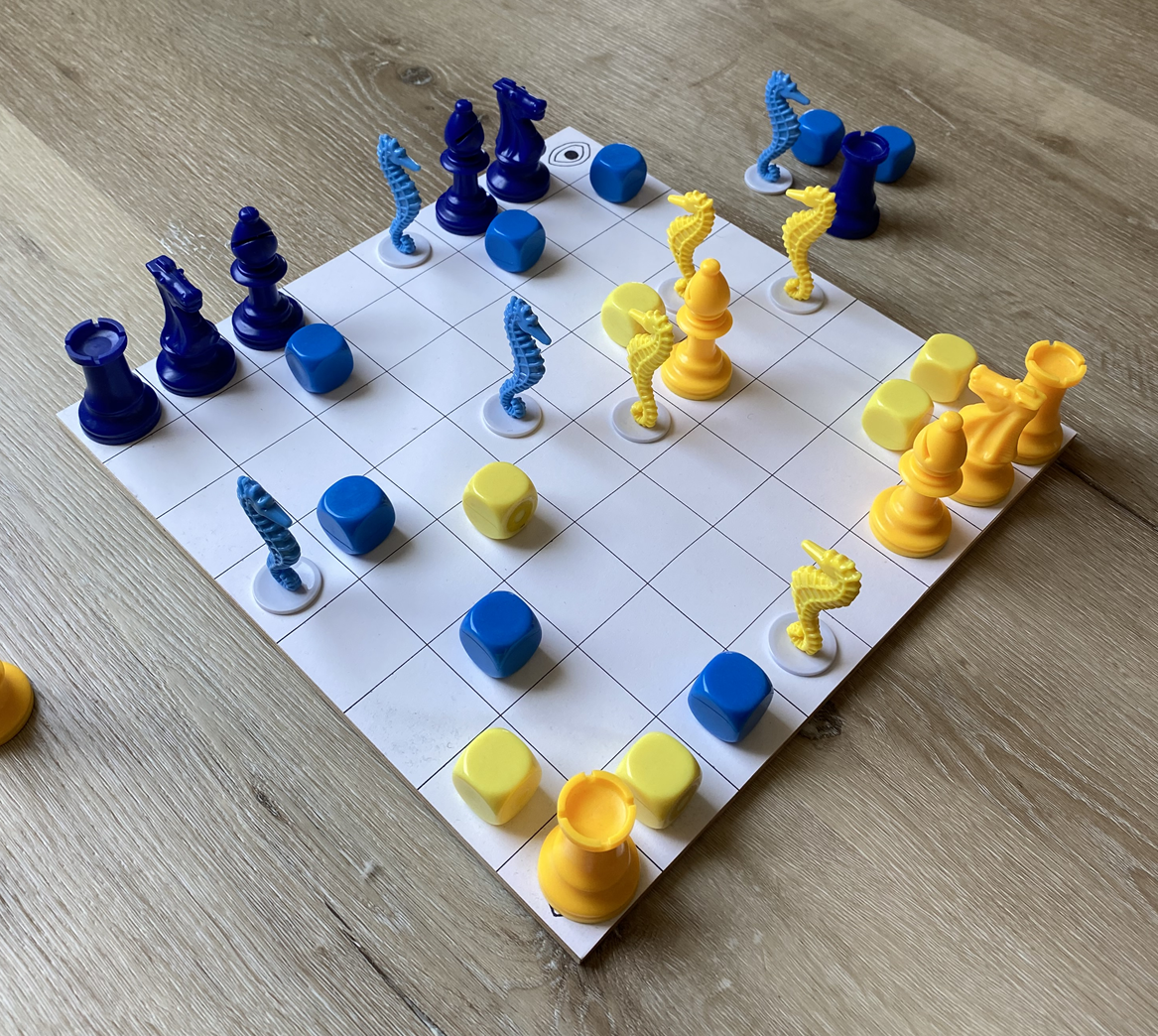
The second yellow seahorse moved forward. This allows lateral movement of cubes.
Seahorse movement: zero - 1/16, one - 1/4, two - 3/8, three - 1/4, four - 1/16
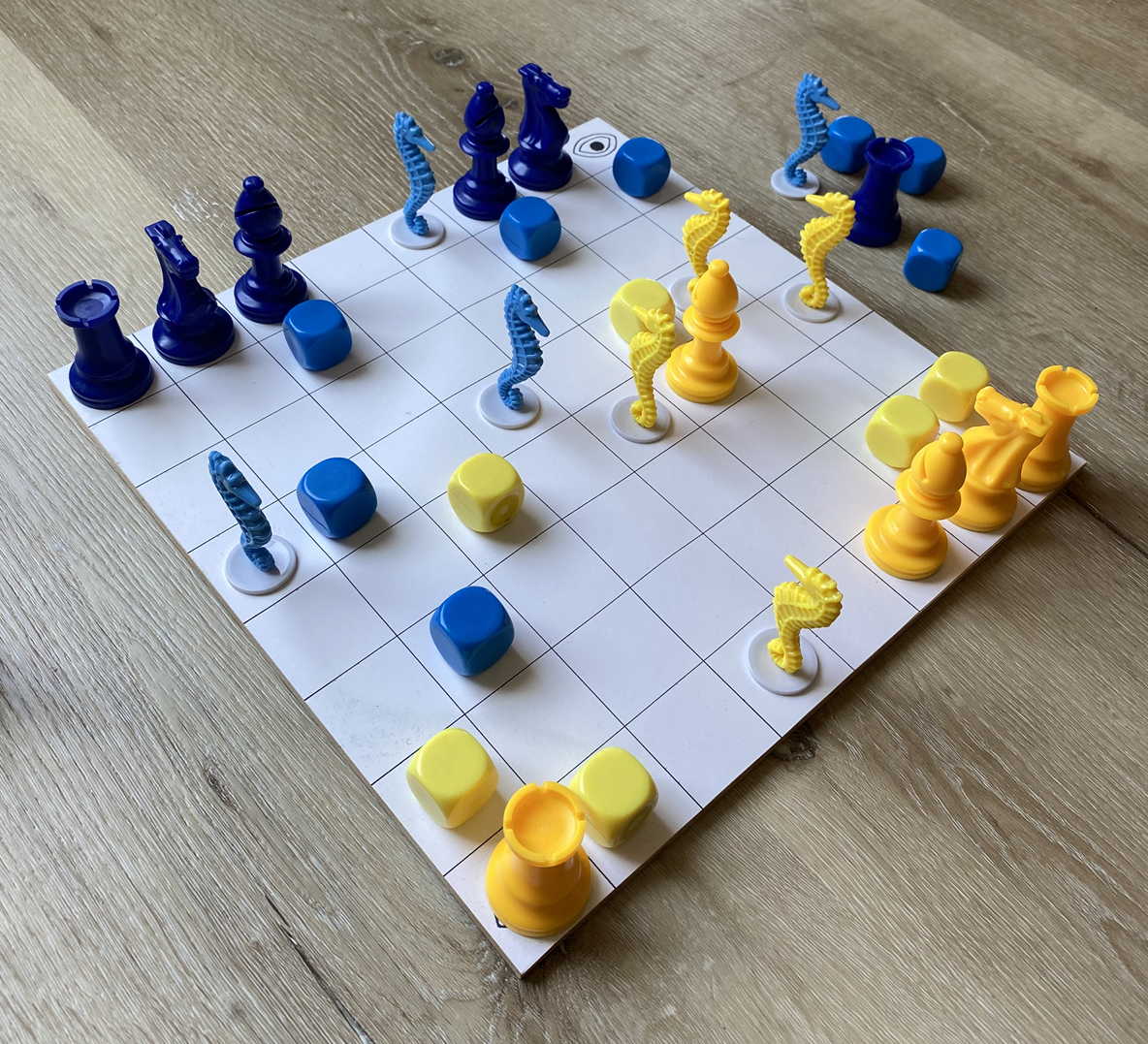
The blue cube attacked the yellow cube in the bottom left of the board. Normally the data for both cubes would be shown on the top for both players to see. Yellow has a circle, while blue has a dot. Yellow is DIFFERENT, so yellow wins.
Momentum can change after a failed cube fight. Note that yellow has given up it datum, which blue
might remember and might find useful.
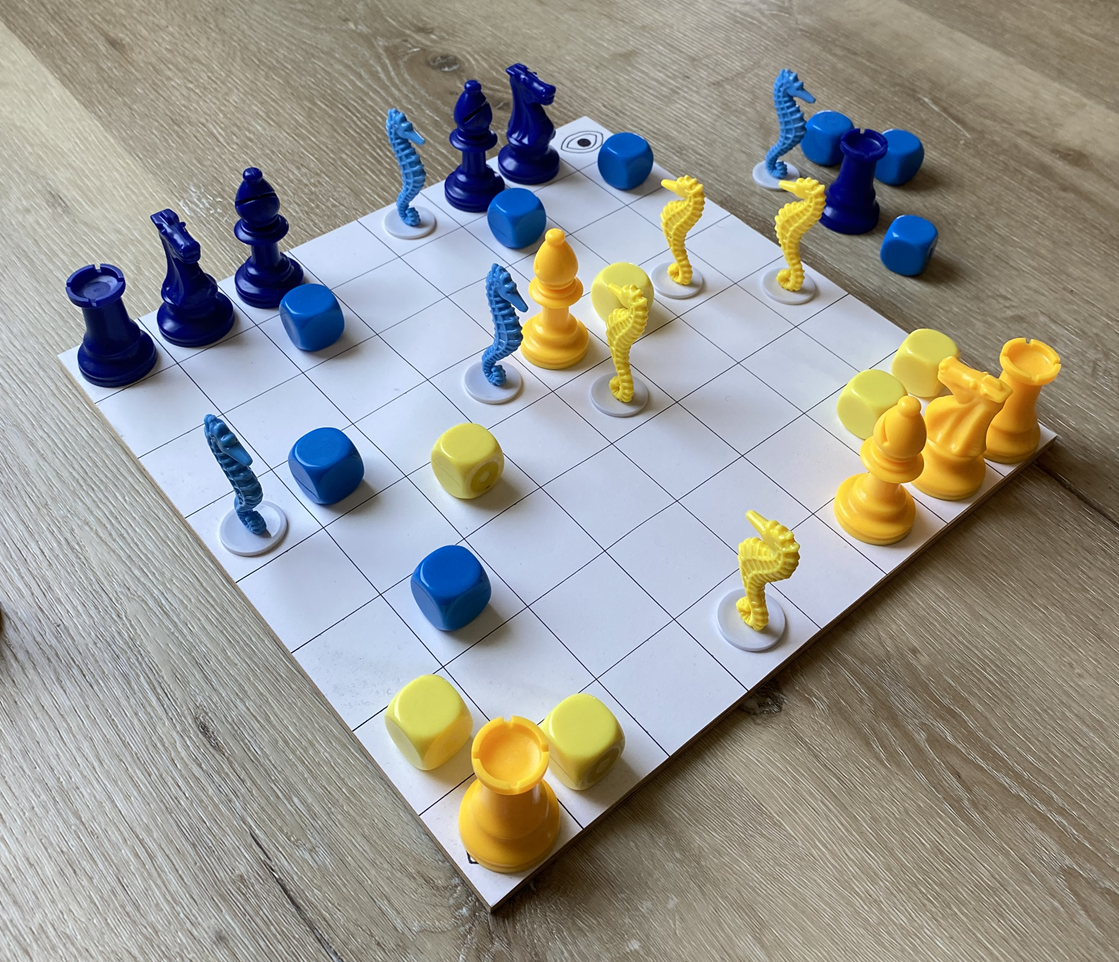
Yellow moves its bishop to threaten blue's vision square. This also protects a yellow cube from a seahorse.
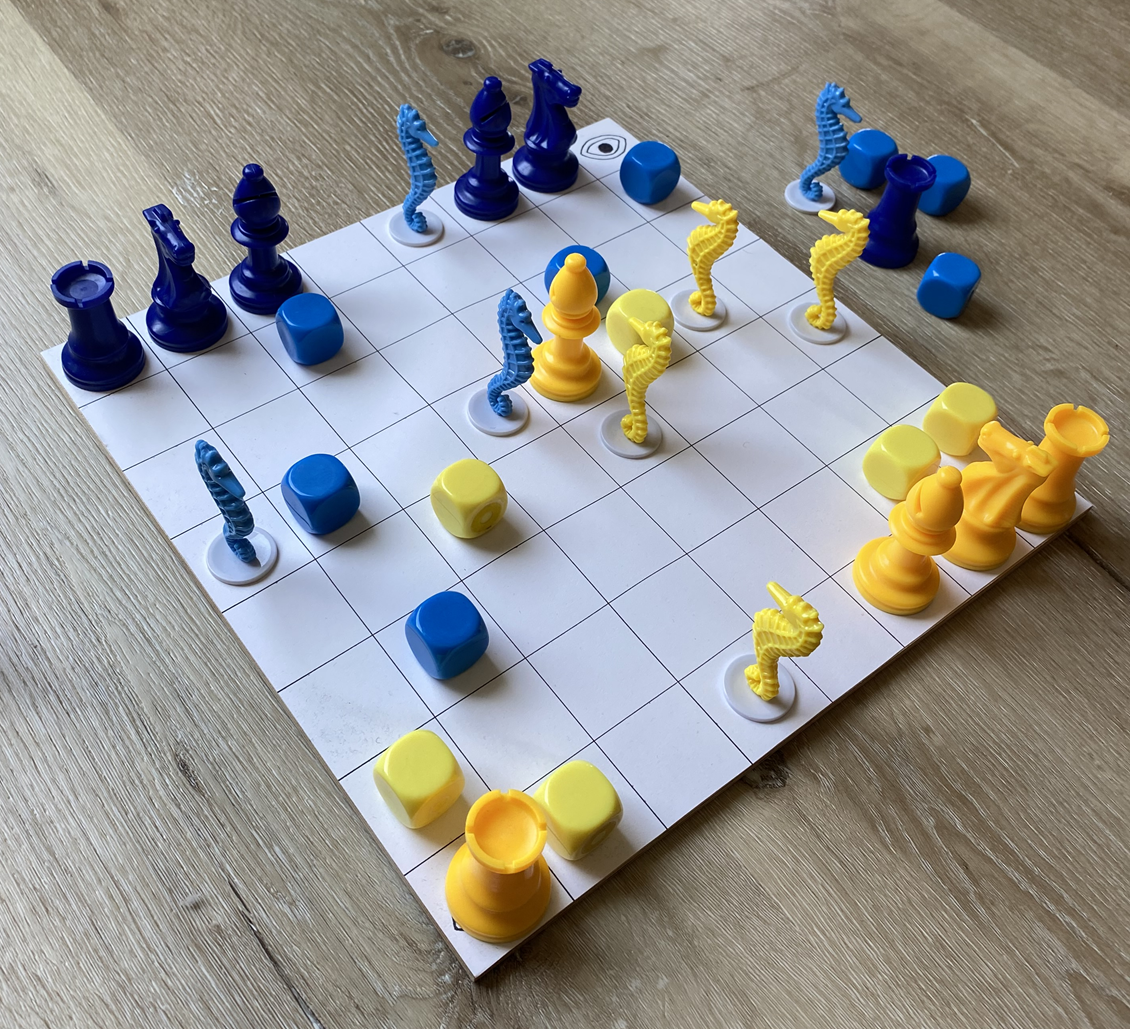
Blue cube blocks yellow's bishop threat to blue's vision square.
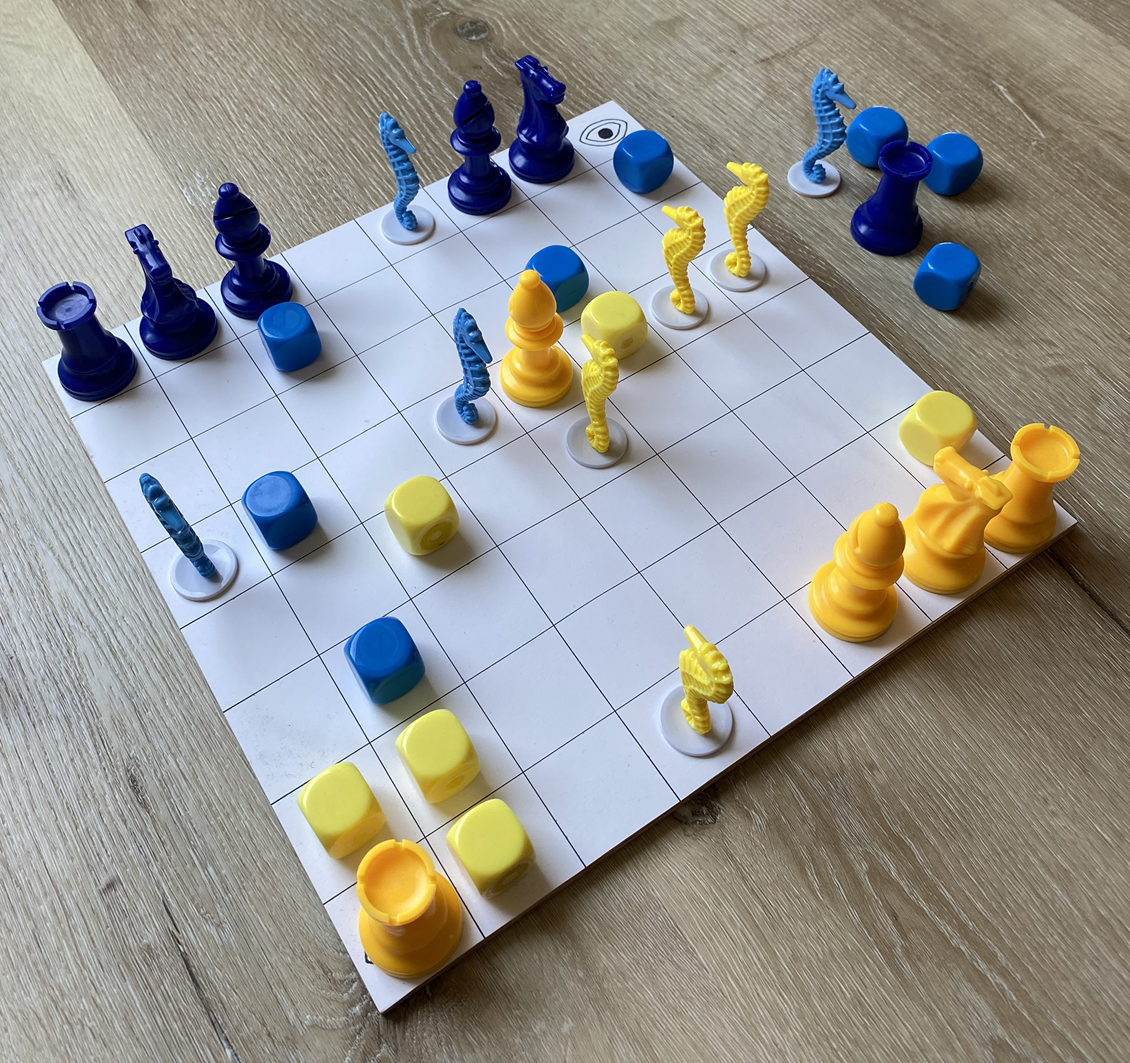
Yellow slides a cube from right to left. I don't remember all the moves that were made, so this is a surprise to me.
Yellow bishop can now move to threaten blue water square. Apparently I made a mistake and gave yellow two turns.
Far right seahorse moved one space up. Better odds for getting that cube, and also less of a threat from the blue bishop.
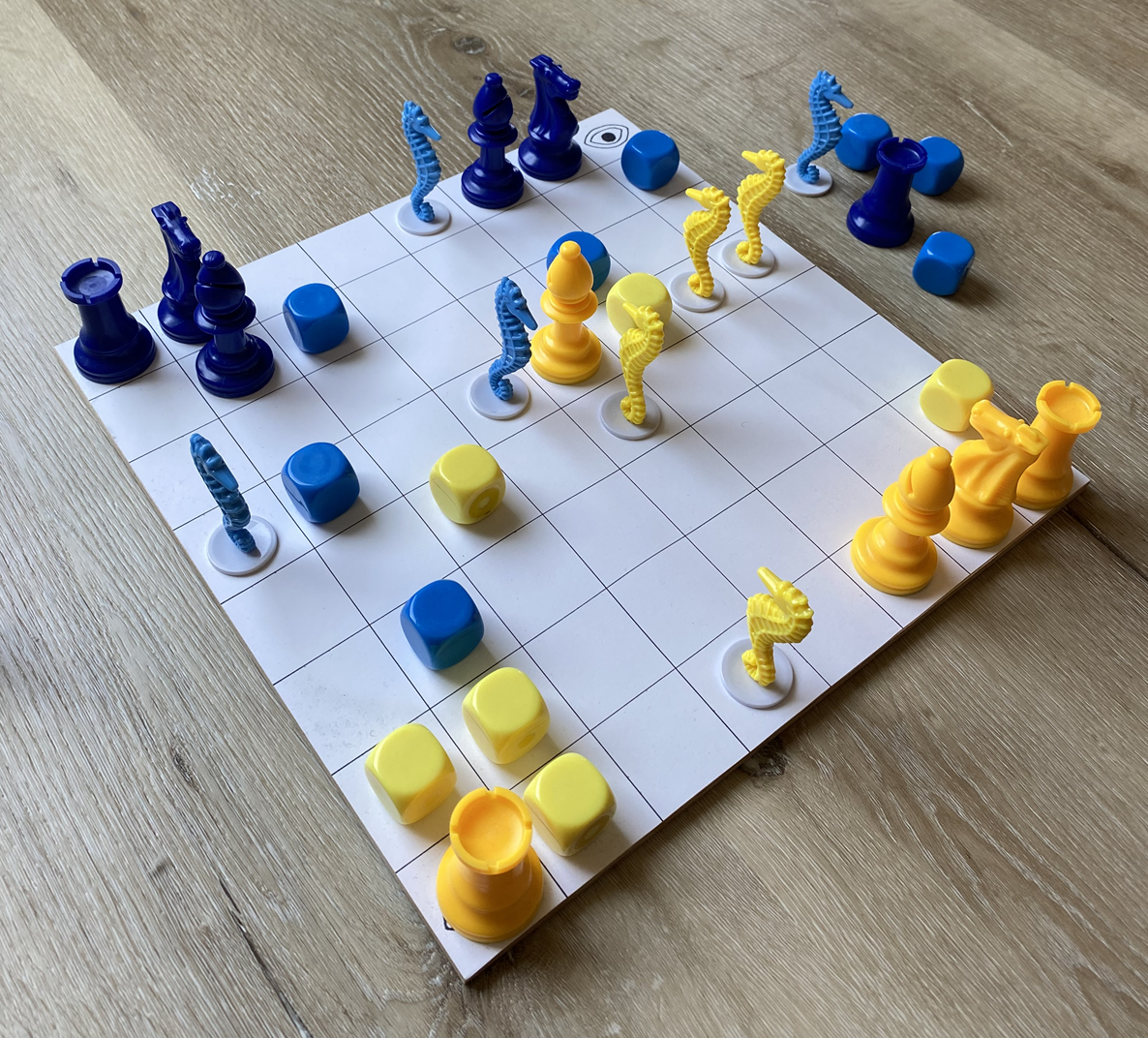
Blue bishop moves to target yellow's water square and the yellow seahorse.
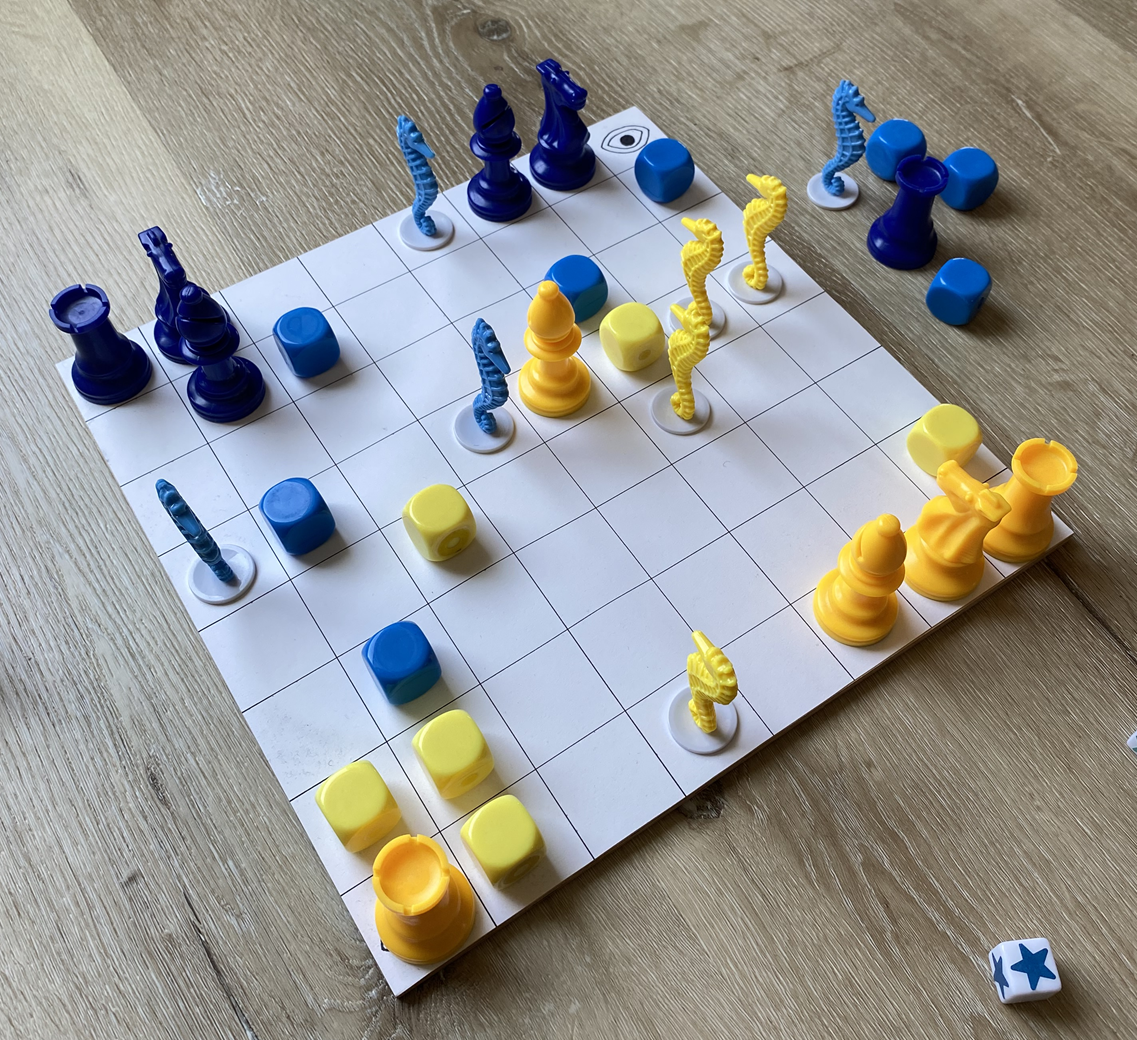
Yellow seahorse got out of blue bishop's line of fire. I'm not sure it moved in the best direction.
Note the rough diagonal layout of the pieces. That happens.
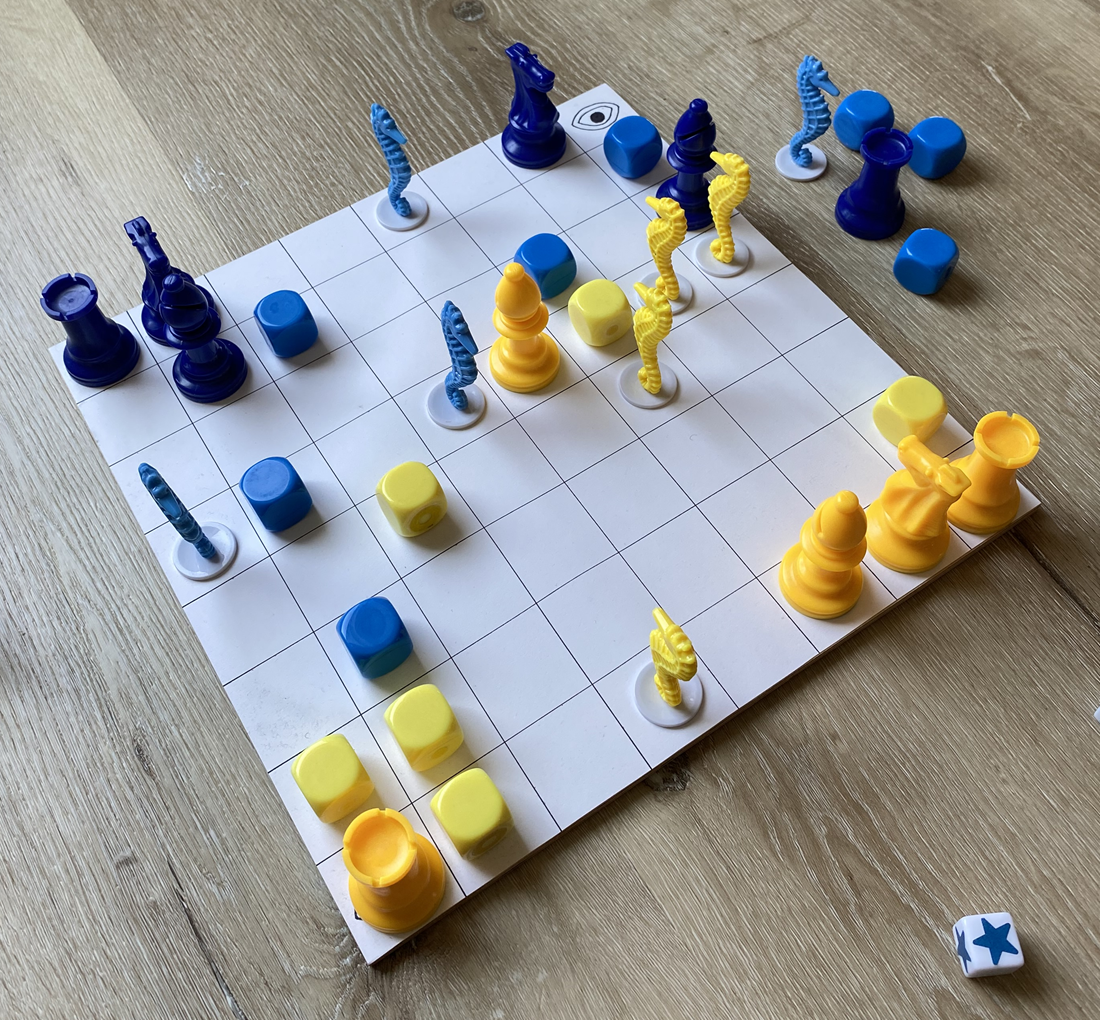
Blue bishop now threatens two yellow seahorses.
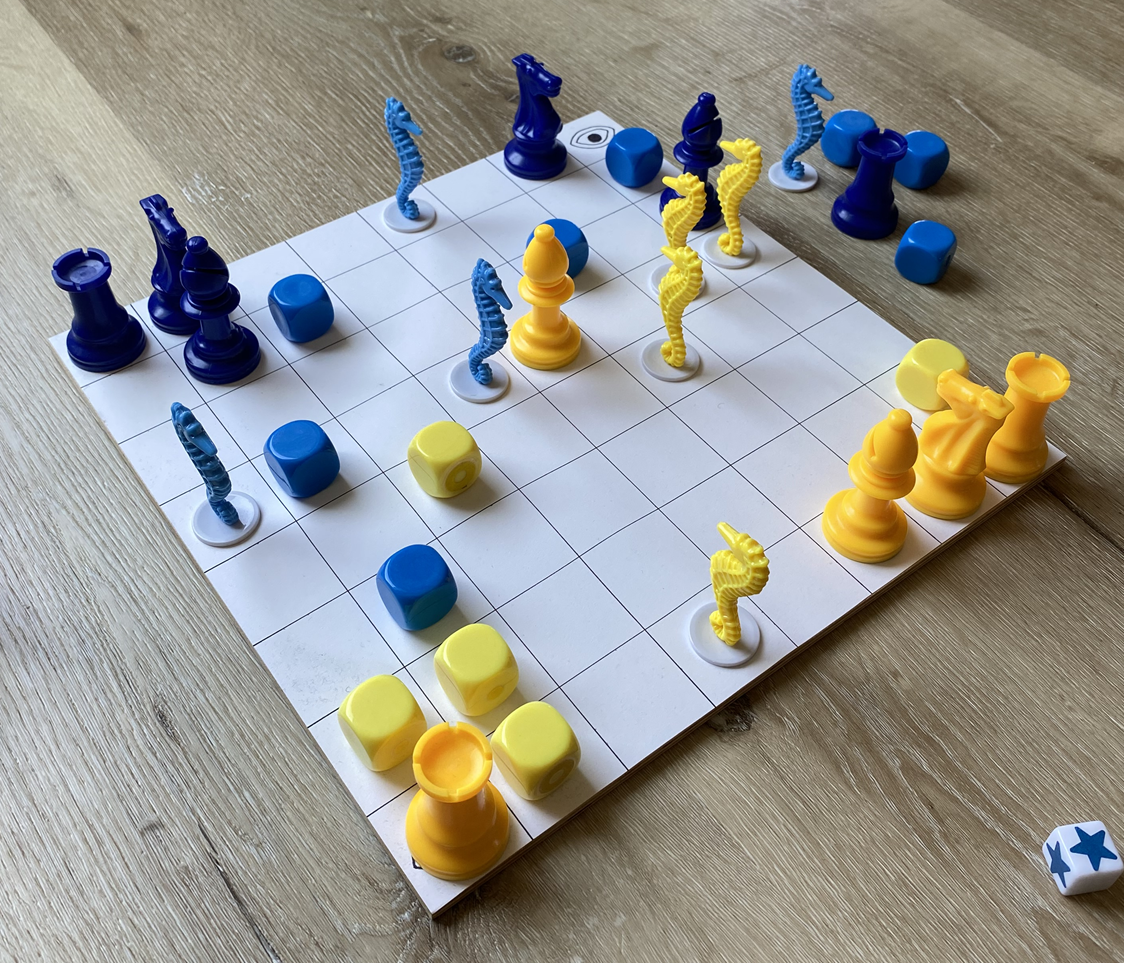
Boop! It's yellow's turn to lose a cube fight. You can see an earlier picture here. The data should really be revealed on top. Yellow is DIFFERENT.
Seahorse now threatens a blue cube, and blue cube has given up its datum. Yellow cube can no longer ambush the blue bishop.